Case study clusters
DiverIMPACTS will build on existing experiences of crop diversification by accompanying 25 multi-actor case studies in their dynamic transition and reinforce co-innovation processes. The case studies are coordinated by work package 2 "Promoting crop diversification in case studies through actor-oriented research".
Each case study is represented by a case study leader and case study monitor and allocated to one of the five innovation clusters: Service crops; Crop diversification under adverse conditions; Crop diversification in systems from Western Europe; Diversification through intercropping, with a special focus on grain legumes, and Diversification of vegetable cropping systems.
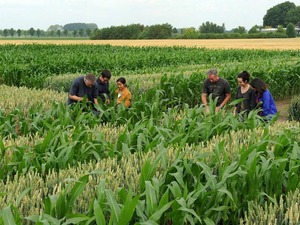
Cluster 1: Service crops
Cluster 1 includes, for example, a project which is seeking to break maize monoculture in the Netherlands, where a group of farmers have reported a 25% yield gap in maize monoculture due to the degradation of soil quality, potential pest pressure and/or emergence of pests and possible legal limitations on organic manure and fertilisation rates.
Potential solutions to improve soil quality include the use of service crops: cover crops such as Italian ryegrass sown under maize, for example, or fodder crops such as a mixture of winter rye and winter pea, sown after the maize crop and harvested in May the following year.
Cluster 1 includes the following case studies:
- Case study 1: The Netherlands: Breaking maize monoculture
- Case study 2: United Kingdom: Herbal or diverse leys use as service crops and valorised through grazing
- Case study 3: Germany: Crop diversification to improve water quality in catchment basin
- Case study 4: Belgium: Service crops valorized through grazing
- Case study 5: France: Breaking irrigated maize monoculture
Cluster leader: Didier Stilmant, CRA-W
Cluster 2: Crop diversification under adverse conditions
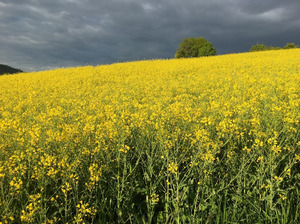
Cluster 2 on crop diversification under adverse conditions includes a Swiss case study seeking to halt a stagnation in organic oilseed rape production, a crop with a high risk of severe yield losses due to large populations of pollen beetles, strong weed pressure and limited nitrogen supply. The main objective of this project is to “increase yield stability in order to promote rapeseed as a valuable crop in the rotation”.
Possible solutions for controlling beetles and other pests include the use of stone meal or oil odours such as mint. The group also wants to test catch crops which offer greater and faster cover, competing with weeds and drawing pests away from oilseed rape production flowers.
Cluster 2 includes the following case studies:
- Case study 6: Switzerland: Introduction of oilseed rape in association with service crops
- Case study 7: Hungary: Diversification of cereal-based rotations with soybean
- Case study 8: Romania: Diversification of cereal-based rotations under adverse conditions
- Case study 9: Italy: Diversification of durum wheat cropping systems in semi-arid environment with sulla
- Case study 10: Poland: Introduction of oilseed rape/flax and cover crops
Cluster leader: Bence Trugly, ÖMKI
Cluster 3: Crop diversification in systems from Western Europe
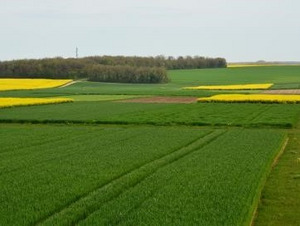
Cluster 3 on crop diversification in systems from Western Europe, includes a project involving the co-design of diversified systems in France’s Pays de Loire. This will draw on earlier work which has sought to improve the economic robustness of local farms, with crop diversification seen as a key component. The project reports that crop diversification will first be improved by taking advantage of existing value chains (such as pulse crops, hemp, alfalfa, and others) and also by developing new local value chains. Particular attention will be paid to foster the natural regulation of pests, diseases, and weeds and limit damages in a low-pesticides strategy, increase soil fertility, and limit the use of mineral fertilisers.
Cluster 3 includes the following case studies:
- Case study 11: France: Co-design of diversified systems in Pays de Loire
- Case study 12: Belgium: Sustainable diversification of organic stockless cropping systems
- Case study 13: France: Introduction of innovative crops and of legumes to foster the sustainability of arable systems under oceanic climate
- Case study 14: France: Diversification of arable crops rotations, specialised on winter crops, under oceanic situations
- Case study 15: United Kingdom: Growing pulses and innovative crops for a less resource intensive diet
Cluster leader: Clotilde Toqué and Romane Nonis, ARVALIS
Cluster 4: Diversification through intercropping, with a special focus on grain legumes
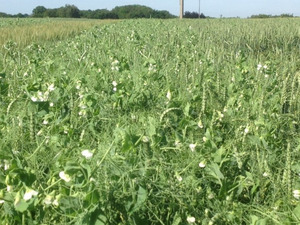
Cluster 4 on diversification through intercropping, with a special focus on grain legumes, includes a Swedish project working on the co-design with organic farmers of intercropping systems for food or feed. Pointing to research showing the agronomic and environmental benefits in grain legume/cereal intercrops, the objective is to engage farmers and other stakeholders in a participatory process to reveal drivers and barriers for intercropping of grain legumes and cereals in organic farming.
Cluster 4 includes the following case studies:
- Case study 16: The Netherlands: Spatial, temporal and genetic diversification of intensive systems
- Case study 17: Belgium: Grain legumes intercropping with cereals
- Case study 18: Belgium: Grain legumes intercropping with cereal in organic systems
- Case study 19: Sweden: Co-design with farmers of intercropping systems for food or feed
- Case study 20: Switzerland: Intercropping for species other than peas and faba beans in association with cereal
Cluster leader: Anita Gunnarson, HS
Cluster 5: Diversification of vegetable cropping systems
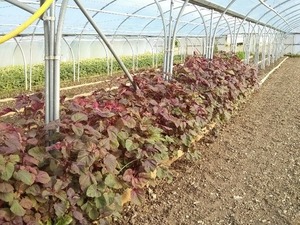
Cluster 5 on the diversification of vegetable cropping systems includes a UK project looking into crop diversification in protected vegetable systems. The coordinators note that growers have already moved away from mono-cropping in protected systems and now want to explore more options to increase profitability and sustainability. The case study should contribute to collect more data and to display possibilities in increasing diversity to improve yields. The main objective is thus to upscale diversity for increasing the spectrum of cash crops based on two small scale organic vegetable growers.
Cluster 5 includes the following case studies:
- Case study 21: Belgium: Crop diversification through inter-farms co-operation
- Case study 22: Italy: Cereal-vegetable systems for food quality
- Case study 23: The Netherlands: Multi-cropping for vegetable production in short supply chains
- Case study 24: United Kingdom: Crop diversification in protected vegetable systems
- Case study 25: France: Enhancing crop diversification of vegetable food chains in the Roussillon area through joined actions from farms to market
 tap and then scroll down to the Add to Home Screen command.
tap and then scroll down to the Add to Home Screen command.